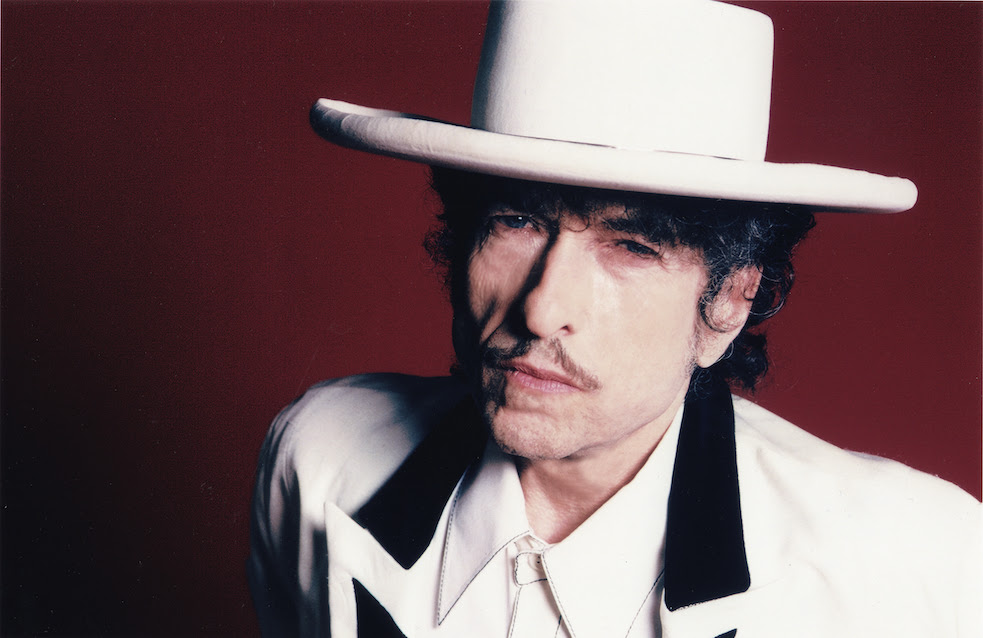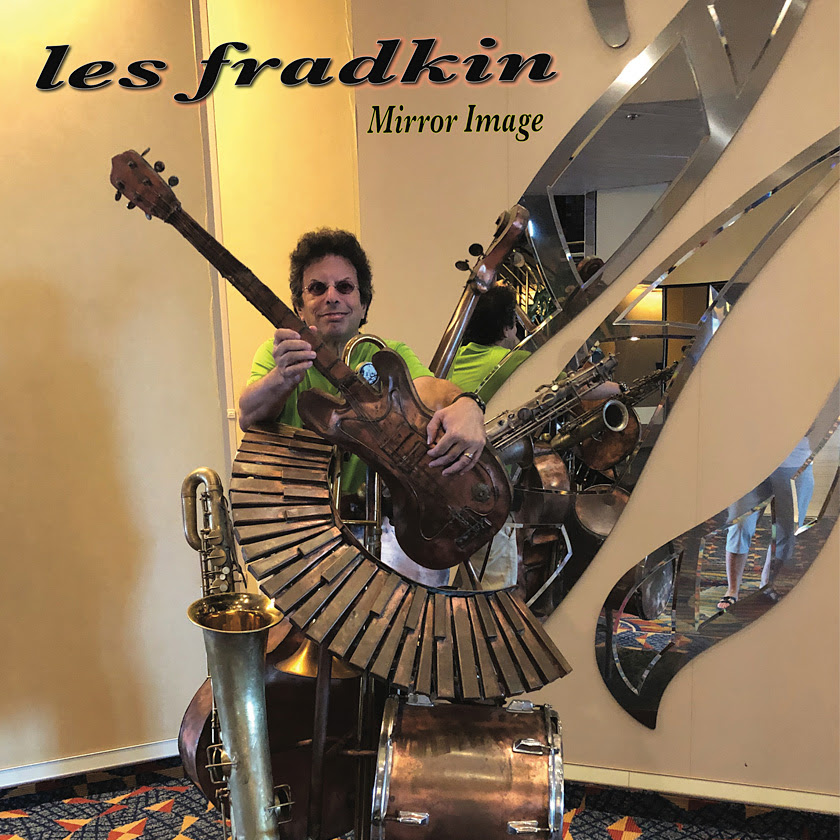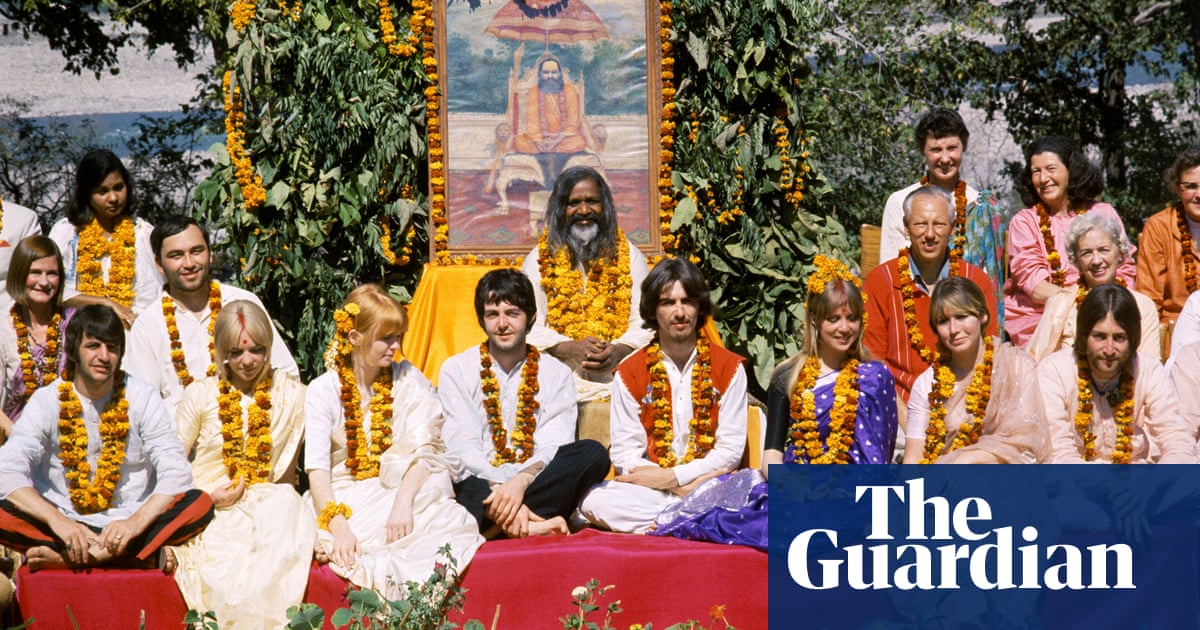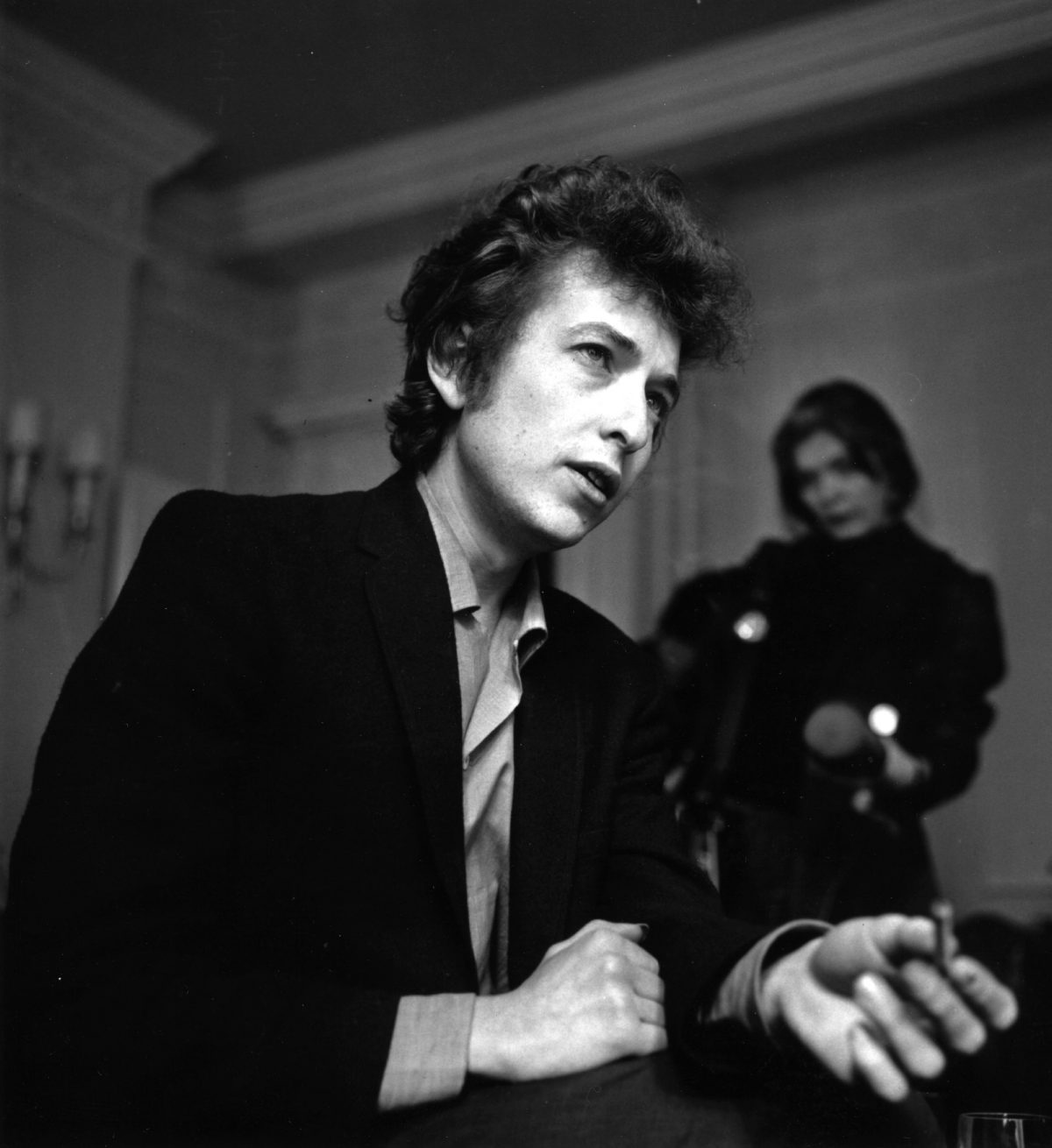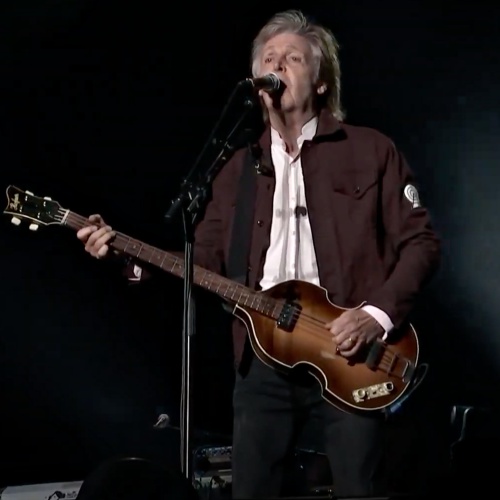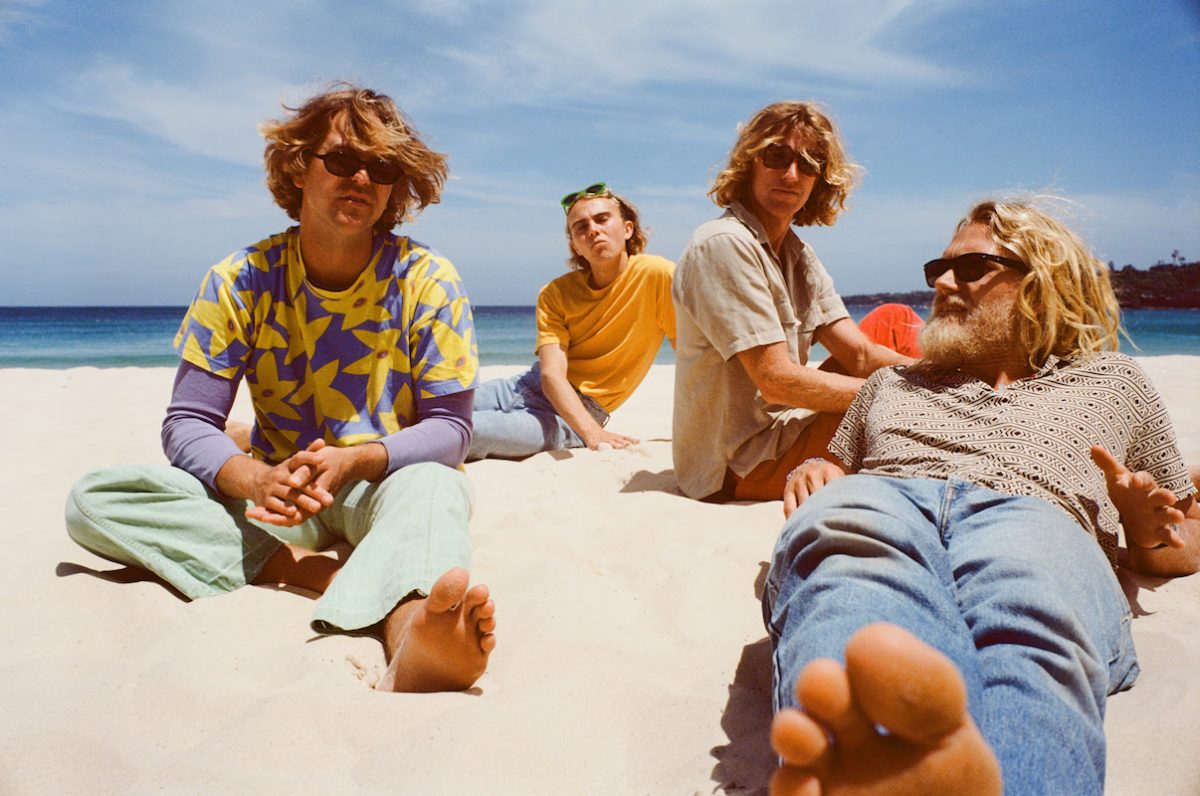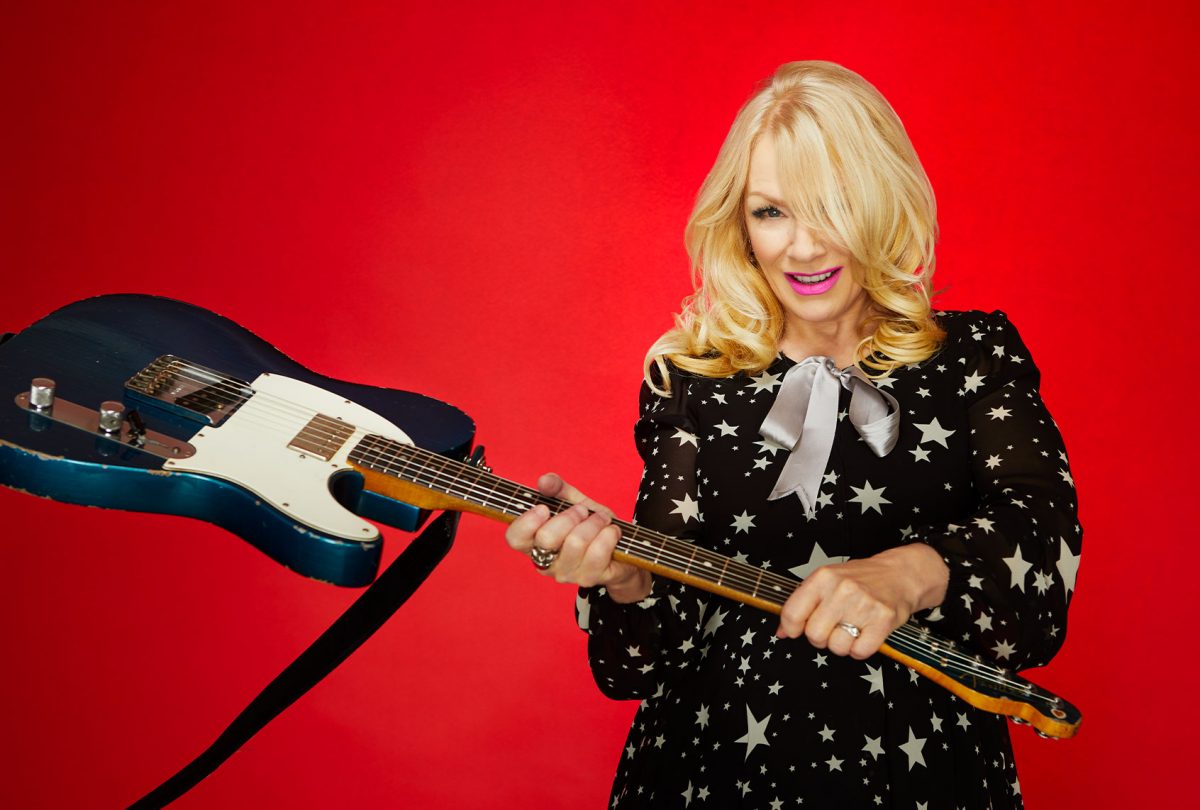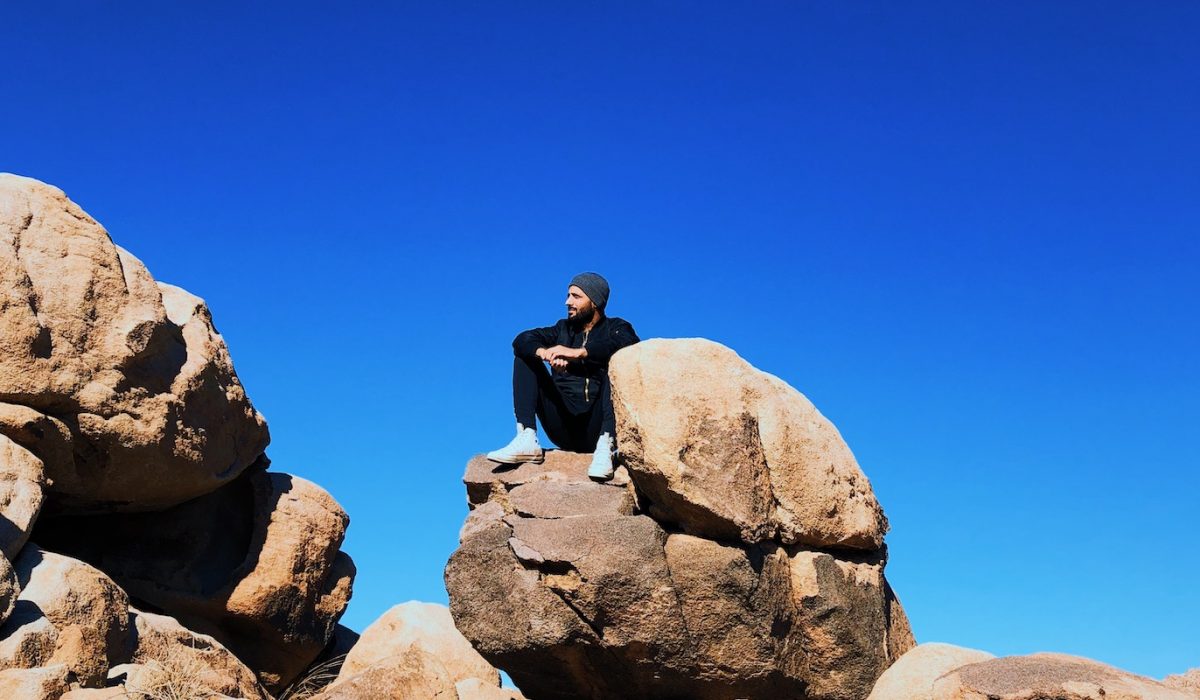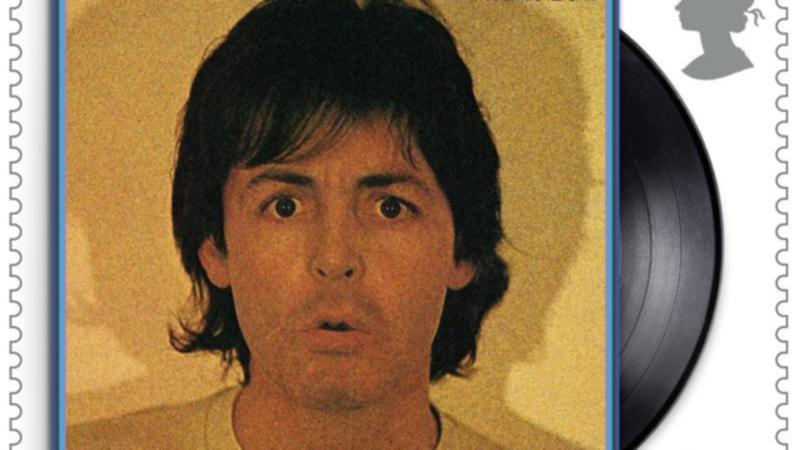It’s easier than ever to listen to practically the entirety of recorded music. But for musicians, it’s harder than ever to make money. On Episode 31 of The Politics of Everything, hosts Laura Marsh and Alex Pareene talk about the economics of the music industry with the English musician Tom Gray, who founded the #BrokenRecord campaign, and David Turner, who writes the newsletter Penny Fractions. Did streaming save music, or is it killing it? Should we blame Spotify or the record labels for the industry’s problems? And what should be done to make the music business more equitable? Tom Gray: It took me five years to find a copy of Starsailor by Tim Buckley in the 1990s. Five years. And when I got it, I was not happy. I did not like that record. That was five years of shuffling through boxes. I mean, streaming is incredible. Streaming is all the music in the world in your back pocket. Who wouldn’t want that? Laura Marsh: That’s Tom Gray. He’s a musician we’ll be hearing from later. He’s talking about this moment in the mid-2000s that changed music. Suddenly, you could listen to almost any song, any piece of music, whenever you wanted it on your computer or on your phone. Alex Pareene: You didn’t have to pirate it through services like Napster or Limewire. You didn’t have to pay per track the way you did on iTunes, either.Laura: There were all these streaming services. Spotify is obviously the big one; it was founded in 2006, and finally launched in the Unites States in 2011. Alex: There was also Grooveshark. There was YouTube. There was Pandora. Laura: I remember some of those. And the result has been that there’s more music available now to the general public maybe than ever. But, a decade on, musicians are struggling to make ends meet, and a global pandemic has made that even harder. Alex: Today on the show, we’re talking about the music industry, some of the biggest entertainment companies in the world, and a tech giant. Laura: We want to talk about how streaming is changing music. Alex: Or maybe the question is: Can music survive streaming?I’m Alex Pareene. I’m a staff writer at The New Republic.Laura: And I’m Laura Marsh, the magazine’s literary editor. Alex: This is The Politics of Everything.Laura: So today we’re talking to Tom Gray. He’s a composer, songwriter, and founder of the #BrokenRecord campaign. Tom, we’re talking about music in the age of streaming. Can you give us a sense of what it’s like to be a working musician nowadays, especially over the last year? Tom: It’s quite hard. There are 50,000 musicians in the United Kingdom, and the median income is somewhere around 20,000 pounds a year. Alex: For our American listeners, that’s around $28,000.Tom: The truth is, as I’ve progressed through this industry, I’ve seen more and more of my fellow musicians coming from more privileged backgrounds, because it is, I think, harder and harder to have a sustainable career in the arts without coming from privilege. So when everything started closing down, it was like “Oh God, the licensing money is going to disappear.” I could see touring income was obviously going to disappear. And with all that, merchandise and all the rest of the incomes that come ancillary to touring. And we’re left with streaming, we’re left with recorded music. Streaming now accounts for about 85 or 90 percent of recorded music sales. And it pays extraordinarily badly. Laura: Let’s talk about that. What is the general deal? I’m sure that this varies artist by artist. But if you are a musician and your music is on Spotify, what are you expecting to get from that? How does streaming actually pay musicians? Tom: So you have to understand something called the revenue share model, which is a lot of how all streaming services work, actually, and music is no different. They collect all the money from everyone’s subscriptions, pull all the money from advertising, and then they divide that by the total number of streams in the system. That’s the only way you achieve any kind of per-stream rate. There is no such thing as a per-stream rate. Laura: It’s not the same as back in the old days, when if you went and bought a single, a single was, say, five pounds, $5, and everyone who bought it paid the same amount. But in this case, you’re competing with every other person who has ever made music to get a share of one pot.Tom: And of course what will happen is—as you’re aware—some people have family plans, or duo plans, or they have all these other bundled plans, or they’re listening on “freemium,” and their streams will have different valuations based on how much money they’re putting into the system. In a family plan, that’s six accounts for like 15 bucks or 20 bucks or whatever. Take the 15 pounds in the UK and divide it by six. That’s how much per individual is paying for their total streams. Now, if each of those people is listening to an average amount of music, which is say 500 or 800 tracks a month, their streams are worth an awfully lot less than people who are listening on a premium. You understand how it starts to break down, too. I saw an audit of a pretty big artist recently. In one quarter, they were paid 36 different stream rates by one platform.Alex: You can’t say Spotify pays artists X cents per stream or something because it varies so much by who streamed it, how much they stream, and how much they are worth to Spotify.Tom: Exactly. And when we talk about per stream rates, what we’re doing is sort of smushing all of this data together and dividing it up and looking at averages and trying to work out basically where they are. When you do that with Spotify, you come out with a horrendously low rate: around $0.003 per stream, which is about a third of what Amazon is paying. And that’s because they have premium services and all of this bundling and these marketing schemes—they give away Spotify with phones and things like that. So people are listening for free, essentially.Laura: Twenty, 25 years ago, if you were someone who really loved music, how much do you think you were spending per month buying records? Tom: This is interesting. I actually looked into this data. It turns out that the amount of money that people spend on music has basically not changed. Laura: That surprises me. Because I would think if you’re a music lover and you’re buying maybe three or four albums a month, that’s like maybe $50, $60, $70, compared to like $15 a month for a premium account on Spotify. Tom: We’ve got to remember that the big music listeners and the “not really very interested but quite like music on in the background” people have been totally cannibalized together by streaming. Your big fan puts only 10 bucks into the system and the person who doesn’t care anything about you only puts 10 bucks into the system. So what’s actually happening is there are more listeners, there are more people paying for music. But when you do the average, it comes out basically the same, because there used to be people who would spend 300 bucks a month on music, but they don’t do that anymore because they’re streaming. So the average per individual per consumer has basically not changed. Alex: That’s interesting. I often think about this in the context of how to pay for journalism, which obviously is important to Laura and me. But when people say people aren’t willing to pay for the news, I always think: Why are people paying an internet service provider to get on the internet? They’re paying to get their news and they’re paying to stream their music. And when, 25 years ago, you would have just bought a newspaper, bought a record, there wasn’t an intermediary in there that you had to pay for access to those things. You just went to the store and you got those things. Tom: When people really start thinking about streaming, the thing that upsets them most is when they realize that their subscription doesn’t go to the music that they listen to. It just goes off into this big pot that gets shared out amongst everything else. The average listener, if you are listening to 500 or 800 tracks a month, probably only about two bucks of your 10 bucks is going to the music that you listen to. The rest is going to music that you don’t listen to. I don’t want to give my money to music that I don’t like. I don’t want to fund music that I hate. In fact, quite the opposite! Where is the moral right of the consumer in this? I mean, when you pay your 10 bucks, you’re funding misogynistic hip hop, you might be funding some of the worst jazz in the world. This is where your money is going. So that, for me, is a curious problem. It’s a much bigger question for culture widely, I think, because if we’re saying everyone’s just chucking in money to fund the mainstream, which is what’s happening—all the money is going to the most mainstream thing—curiously, what we’re doing is we’re all funding the mainstreamization of culture. We’re all going, “Yes, please. Let’s all fund that algorithm that makes us all listen to the same 10 songs.”Laura: I’m curious for your thoughts about how streaming has changed tastes. Before streaming, people who didn’t want to listen to chart music or mainstream music could go and seek out their favorite bands’ records, and would often spend a lot of time searching for rare releases and stuff like that. And that whole culture has really been destroyed by streaming. In the early days of Spotify, I remember getting it and being like, “This is amazing, because I can find tracks that I would have had to travel to a different country to buy in a record store in, like, Nebraska, and now I can access it.” So for a while, it kind of seemed like it was opening up tastes. We seem to have moved past that into this kind of sludge. If you look at the most-streamed songs it’s like 10 songs by Ed Sheeran and Drake, and you don’t see a lot of diversity in what breaks through. Tom: You’re absolutely right. It’s wrong to not say that streaming is this incredible technology for music discovery, because it is. It’s unbelievable. The problem we’ve got is that streaming solved distribution for the record companies, but it did a total disservice to the artistry of music-making. You’ve got Daniel Ek telling us now that we all should just be putting out more and more music all the time, all day long.Laura: Daniel Ek is the CEO of Spotify, is that right? Tom: Yeah, he’s that guy. And he’s like, you should just make more music all the time. That’s the only way to feed the algorithm. You know how kids say you have to trick the meta on Instagram or on Tik Tok to get on top of the algorithm, you have to do three posts a day and you have to use these hashtags? He’s saying that’s what we need to do with music. We need to keep making more and more of this crap, just throwing it into the system so that we listen to more. And of course, the problem with music is that if you’re making loads of it, it’s shit. Laura: You have been doing some work on this and organizing. What’s the backbone of your campaign? Tom: Look, we’ve all been saying to the industry for years we need to sort this out. We complain about it all the time and they do nothing about it. And so I thought, well, I know the only thing that they’re afraid of, and it’s not me: It’s legislation. Laura: Obviously we’re based in the U.S. and your work is based in the U.K., so there’ll be some differences. But what kind of regulation are you trying to encourage the U.K. government to adopt? Tom: Three things. There’s a right, which is actually a performance right, called equitable remuneration, which gets paid by radio in the U.K. and gets paid by satellite radio in the United States. That’s a right that’s associated with radio performance. And because I think so much of streaming is playlisting now, and is this noninteractive system where you just press play and it’s on all day long—how is that different from Pandora? If Spotify calls it radio—it says Beatles radio—I’m like, well, some percentage of this money in the system should be paid directly to performers via this right called equitable remuneration. And that scares the hell out of record companies. Because the big problem in all of this is not the streaming services. I mean, the streaming services are shitty horrible people, right? They’re like Silicon Valley, “Who cares, we’ll set the world on fire and leave it burning in our wake, we don’t care, we just want to get rich and own a lot of stuff.” And that’s fine, but the people who were making most of the money from streaming—all the major rights-holders, which is Sony, Universal, and Warner—I think nine or 10 billion from the total of 12 billion that came from streaming went to those three companies. And globally, they have about 70 percent of the market, but that’s because they don’t have China and India and places like that. It may be as much as 80 or 90 percent of the market is owned by three companies in the United Kingdom. Now the contracts that these companies do are called standard record deals. And essentially this is how it works: They give an artist some money to make a record and to buy them out of their rights. Then the artist pays them back for that money from their small royalty, their percentage—from their tiny percentage. What you’d hope for, what you’d wish for, is a system where they give you some money, and then when they’ve made that money back, they start paying you a royalty. But that’s not what happens. You pay them back from your tiny percentage. So most artists never leave debt. They never leave debt. I mean, we know from Universal’s testimony in a recent parliamentary inquiry, they were saying, essentially, that of their total revenues, only about 20 percent of it they spend on what they call A&R, which is all of their advance payments. All of that music production, everything. So we could work out that basically only about 5 percent or lower of Universal, the world’s biggest record company, only about 5 percent is being paid to artists as royalties.Laura: So they’re taking a big slice of the pie or, in fact, leaving just a very small slice of the pie for other people. How does the equitable remuneration cut them out if you’re being paid as if you’re on the radio? Do they get less money? Does it go straight to the performer? Tom: By precedent, in the U.K., outdoor remuneration is paid 50 percent to the rights-holder, to the record company, and 50 percent directly to the performers, irrespective of contracts, irrespective of debt, irrespective of anything. So it’s just money straight out from stream one to the performer. That’s why I want it: Because it’s just money in the pockets of musicians. If I have to take it off Universal, so be it. That’s who it’s coming off of. The platforms are getting 30 percent. The record companies are getting about 52 or 55 percent. What are the costs now for record companies? What costs have they got? They’re not manufacturing anymore. They’re not distributing anymore. They haven’t got trucks driving CDs all over the country anymore. They’re not paying A&R scouts in every city and town to go and stand in bars and listen to music. They’re just looking at Tik Tok. I mean, what do they do any more for 95 percent of the money? They’re just marketing companies that are pocketing 95 percent of the income. We need to massively reset everything in this because it’s a horror show. These companies should have done away with their old contracts from the twentieth century as soon as all of this came along. They haven’t. They’ve done nothing. So I’m sort of swinging a hammer at it using the law. Laura: You said there were three things that you want. That was one of them. What are the other two? Tom: I’m trying to get the Competition and Mergers Authority in the United Kingdom to investigate them all. Laura: Record companies as potentially monopolies?Tom: Yeah, as an oligopoly. Universal is part-owned by a Chinese company called Tencent, who part-own Spotify, and Spotify part-owns Universal and Tencent. I mean, call me old-fashioned. There’s stuff going on there that isn’t great. Laura: What’s the third thing that you were pushing for?Tom: The third thing that I’m asking for is the creation of an actual regulator for the music industry. Essentially, music is being treated as a loss leader across the board, by all these companies. Spotify wouldn’t care if they were selling carpets or trousers—sorry, pants. It’d be the same thing, right? They’d just be selling it cheap and growing their company as fast as they possibly could. Spotify doesn’t care about profit. They have never tried to make a profit. They’re trying to grow their user base as fast as possible. And to do that, they are loss leading with a product, and that product is music. And by loss leading with all of the music that’s ever been made, they are loss leading the entirety of musical culture. It’s not good. The example I always use, although I don’t like comparing music and milk, but it’s the one that works best because dairy farmers in the U.K. have a regulator called the Groceries Code Adjudicator, because the big supermarkets use milk as a loss leader. Laura: They sell milk very cheap so that people will say, “Oh, I need a pint of milk and it’s cheap there,” and then they get their other groceries at the same store? Tom: Exactly. That was putting dairy farms out of business. So now dairy farmers have an adjudicator who protects the price of milk. I’m asking for the same thing, but I’m also asking for a more broad-range adjudicator, because there are all kinds of really awful, icky things that are still going on in the music business: I mean, young women being horrifically, exploited and abused, people basically just calling themselves music managers and literally getting off a bus and going, “Hey, I’m a music manager. Have you met me?” and just doing what they like from there on in. And, unfortunately, young kids come along and believe them and find themselves in pretty dark situations. This is the whole problem with music in so many ways, the way that it brings in young people and people of color and just exploits the hell out of them and then leaves them for dead. And I just think that we could do the whole thing a lot better. Alex: I hope so. Tom: Well, one would, wouldn’t one? Laura: So Tom talked with us about the state of the industry today, and how tough it is for musicians. Alex: After the break, we’re asking how we got here. We revisit the early 2000s, when the music industry was facing a crisis and streaming was supposed to save it.Laura: So if you think back to the early 2000s—and it’s kind of a dim memory, this age before streaming—the music industry was already struggling. The thing that people were worried about back then was that no one would pay for music at all in the future, that we’d all just be pirating and downloading illegally for free.Alex: Here’s my memory: I went off to college, and in our dorm, all the dorms were connected on the same network, so everyone was sharing their music libraries. And I was like, “I don’t ever have to buy a record again.” This was in New York. It happened around the same time Tower Records closed here. And it was like, “Oh, I must’ve done that. I and my friends in the NYU dorm must be the people who did that.”Laura: I remember taking my little box of CDs to college with me the first year. And then the second year I was just like, “Oh, I don’t need these anymore. I can play music without having this record collection.”Alex: So you and I, our generation destroyed the industry until these beneficent streaming corporations came in to save it. That’s basically how we understand it happening?Laura: That’s been the narrative that’s formed in my mind over the years. So I can’t understand how things went so badly wrong. I think that’s why we need to talk to another guest. Alex: So we’re joined now by David Turner, who writes the newsletter Penny Fractions, which is about the music streaming business. A small disclaimer, before we get started: David works for SoundCloud, but he wants to be clear that his views are his alone and don’t represent those of his employer. Hi David, thank you for joining us. David Turner: Thanks for having me today. Alex: As a layperson, if you’re interested in the music business, you maybe get the sense that it’s in trouble. You get the sense that artists are not able to make a living through their music anymore, and that everything has been upended by technological change. My question is: Is that accepted story of how the music industry fell apart true? And am I, the music consumer, responsible because in 1999 I downloaded Napster and started downloading Wilco albums? Did I set this all in motion?David: No, you did not set this in motion doing this in 1999. The record industry overall right now is actually doing really, really well—profits are up and have been going upwards since around the mid-2010s. And what has been happening is that artists right now have been raising a lot of concerns about these new digital platforms and these new digital ways of payment. And artists are seeing that these platforms exist and are seemingly making a lot of money off their work, while artists are not seeing that return come in. The big issue with the record industry is the same as it’s always been—it’s the major labels. It’s major labels that have had control dating back to like the 1970s, the 1980s and the 1990s, when we used to have, at one point, six major labels, then five, then four, and now we only have three. So when you start looking at that, it becomes, to me, the much bigger issue, rather than its being an individual platform or individual consumer choice. Alex: I think that’s worth highlighting, because I think people think the music industry is in trouble, but you’re saying the industry is doing fine. The industry is making money under current arrangements. It’s the artists—they’re the ones in trouble.Laura: When I was growing up listening to music, there was this whole scare around people downloading stuff from Napster and teens getting prosecuted for, like, theft of intellectual property. And there was a sense that streaming services were going to save everyone from having to either be criminals or pay an inordinate amount of money to buy a CD. They were seen as this great savior, like iTunes was seen as actually providing a way to monetize music, Spotify was seen as a way of being able to access music and pay for it. What do you make of that narrative?David: I find that narrative on its face laughable. Imagine an industry, a $10 billion-plus industry, that can be taken out by a teenager. That’s hilarious.Laura: So what was piracy? How extensive was it? David: To contextualize piracy a little bit better, internet access wasn’t rampant in the late 1990s—penetration was a little over 10 percent globally. The internet of the late 1990s was not great. You could barely get access to any music. So the idea that all of a sudden the introduction of slow downloads entirely cratered an industry is, to me, specious. And then, to be more serious, there have been a number of academic reports and academic research into this field, and it’s a wash as to whether piracy had a real impact on record industry sales. Alex: Yeah, it’s funny when I’m thinking back. In my memory, I downloaded so much stuff. But then I go back to my favorite records that came out in 1998, 1999, 2000—I bought every single one of them. So in retrospect, I don’t even know what I was spending my family’s precious dial-up internet time downloading.David: There’s sort of that intuitive sense of, I used to buy CDs, and music came on digital, I started downloading music, and that explains everything. But most people continued to buy CDs. Most people still listened to most music on the radio. There are all these other forms that didn’t go away when the internet introduced digital downloads.Alex: I want to get into the economics of this, in the sense that we hear about these incredibly low rates that get paid out to artists per stream. How does the music industry currently make money? Where’s the money coming from, and who’s it going to?David: The way the music industry makes money right now is mostly through streaming. Streaming accounts for, I think, 80, 85 percent of overall recording industry revenue. And most of that revenue can be attributed back to Spotify and Apple. Spotify has a lot of paying subscribers. They have tens of millions—over a hundred million—paying subscribers. And then a lot of it also comes to advertising. Apple also has subscribers, so they make a lot of money from that. And then a lot of it is just subsidized streams—Amazon, YouTube. We don’t really know if those are successful businesses within the Amazon or Alphabet portfolio. We just don’t know that. But the idea is that like 80 percent of that streaming revenue is mostly coming from tech companies. If you notice a trend here, the companies I’m mentioning, among those companies, Spotify is the only independent of those, not owned by a bigger tech company. And it’s also only had two profitable quarters in its more-than-a- decade of existence. So you can see that this isn’t actually a really sustainable or profitable business. But it’s one that is right now being mostly propped up, in Spotify’s case, by investors all across the globe, and finance, advertising, and even the major labels that previously had investment in the company. And then on the Apple/Amazon/ Alphabet side, we really don’t have a great sense. I assume that Tim Cook just sort of looks at the Apple Music costs and just shrugs his shoulders—“Whatever, this is fine.” Alex: Then that money’s going, as you said, primarily to the major labels, right?David: Yes. A majority of that money just goes straight into the major labels. So this is, again, nothing new. This is how things have basically been since around the 1990s, that major labels account for probably over two-thirds of that revenue. And then the rest of that goes through independent labels, mostly represented in the United States by Merlin, which is a big trade group that represents thousands of smaller independent labels. And then outside of those two buckets, there are actual independent self-distributed artists, or labels outside of Merlin. But those represent a tiny percentage of that revenue. It’s very, very small. At this point, a majority of the money being filtered through the major labels or indie labels. Laura: Musicians have been complaining about their relationships with their labels for a very, very long time. Has streaming made it worse? Has it put musicians in an even worse position with relation to their labels? Or is it the same? David: I actually think it’s fairly analogous. I don’t think it’s changed all that much. I mean, the deals certainly have changed. Major labels’ deals have gotten smarter to incorporate more things that artists do. The idea of a 360 deal is that you’re taking some part of touring, merch, and everything that an artist releases. That’s certainly been a newer innovation of the last 20 years. But overall, you can go back to the early twentieth century, when musicians, like blues musicians, were complaining about how record labels treat them. That’s not really any different. A good example is the rapper Silento, who had this song “Watch Me” from five years ago. He signed a five-album deal. He never put out an album. And that’s the kind of deal and classic situation that you would hear from artists certainly 20, 50, even 100 years ago. One interesting wrinkle with streaming—and this is a little bit in the weeds, but it is kind of odd to think about—is that the way that streaming works with artists payouts is that it’s done on a pro rata model. So when Drake puts out a new album, if he puts out a new album and he’s 5 percent of overall streaming that week, he makes 5 percent of the money—he gets 5 percent of the overall pot. So that means that if you put on an album that week that Drake did, you’re going to probably do worse, because all of the streams and revenue is divided out proportionately. So if you put out a new album on a week where there’s a big major release, that’s sucking up all the oxygen. You’re going to actually do worse. Every week, you’re competing against everyone else, because of the way that things are proportionately split out.Alex: Say it’s the 1980s and you’re a college rock band and you sell 10,000 copies of every album that you put out. Ten thousand people are your fans. They buy your record. You’re not penalized for coming out the same week that “Thriller” comes out. But now you would make less money if the indie band had a release the same week as a giant pop star.David: For indie musicians in particular, that is really odd, because traditionally, indie musicians would have no reason to care about the mainstream because they’re in their own economic bubble. Where now you do need to be a little concerned that, hey, Taylor Swift put out a new album. That’s probably when I shouldn’t put out my new album. Alex: I didn’t even realize that part of it.To some extent, I, as a guy in his mid-thirties, am nostalgic for the way music worked in the culture when I was younger. But as an economic enterprise, as a business, and as a thing where it’s like, well, artists put out albums, people buy albums and singles, and it’s played on the radio, we’re talking about a business model that got its start from a technology that’s not that old. The business model itself was basically just from the 1960s. We just were like, “This is how music works.” There was never any reason to think that was permanent.David: That is a great point. There was no reason to think it was permanent. To go back to Napster, I think piracy represented such a radical break from the previous paradigm, and there was a lot of hysteria and a lot of concern about it. Whereas to me, if you go back to the 1990s, the really big concern was that there was a thing called Universal Music Group that was brought to us by Seagram.Alex: Yeah, exactly.David: That was the bigger cultural problem of the late 1990s in the recording industry. Laura: Do you think that the focus on Spotify, and the focus right now on streaming as the villain of the music industry, has benefited all those other actors, because they’re so much more visible than Universal? You don’t hear people talking about the evils of the major labels in the way that you did when Prince was railing against his record label. David: Yes, I do think the focus on streaming companies obscures the fact that this was a system mostly set up by the major labels. And that is a system that they’ve been pretty fine with. I always think about it like this on the exec side. If you’re a record executive in the 1970s, you had to sell records. You really did care how many records Michael Jackson or Bruce Springsteen sold, because if they didn’t sell records, how could you make money? Versus in the 2020s, if you’re a record exec at the high level, you don’t do anything. You just know that you have market share. As long as I’m above 25 percent of market share, which is honestly impossible not to have when there are only three labels, you’re good. Laura: What do you think of artists’ efforts to try and change the current system? Is there any hope there? David: Over the last couple years, there have been a number of groups that have risen up to speak for artists in ways I think are really exciting. There’s been the Union of Musicians and Allied Workers, and a couple others I know throughout the country. I support that. But I do not particularly care for the campaign that are just yelling at Spotify in particular, because I do think it mystifies and confuses the issue when you just look at Spotify and don’t look at any of the major labels or any of the other folks. And then I think also because of that, folks don’t realize just how confusing the industry is. A small example of this is that if you go to Spotify and listen to something on Spotify radio, for an artist, the money generated from that on the publishing side—i.e. who wrote the actual song—that is regulated by the United States government, by the contract royalty board. They decide how much money those artists are going to get paid out from that, it isn’t negotiated between labels or anything. And that copyright royalty board is a three-member board that actually has a lot of control over a number of different digital streaming payouts. No one talks about them. And what happened over the last couple of years is that they tried to up how much they were going to charge streaming services, and all the streaming services fought it. Basically, they were like, “We refuse to pay out for this.” And what’s happened now, it’s been caught in this legal limbo. So I would love it if there are more artists’ outcries over things the U.S. government already has legal say over, rather than trying to appeal to the hearts and minds of private interests.Alex: It’s probably more effective to try to actually come up with a political solution than to just try to beg a private company to stop trying to take money for itself.Laura: So it’s better for artists if streaming services and labels have to negotiate with this huge entity called the U.S. government than with this little person who is making some music on private contracts. David: If hundreds of thousands of American artists were organized in a fashion to make demands of Spotify, I would love to see that. That would get stuff done very quickly. Hundreds of thousands of artists are not organized against Spotify. I’m going to suggest that we aim for that, but maybe try to figure out some other solutions along the way until we get there.
Read Morenzezmtqxmzatyzcyni00ntmyltk0n2etmmm2zdc0mmm4ywjinwy1ymi5nweymtaxzg
